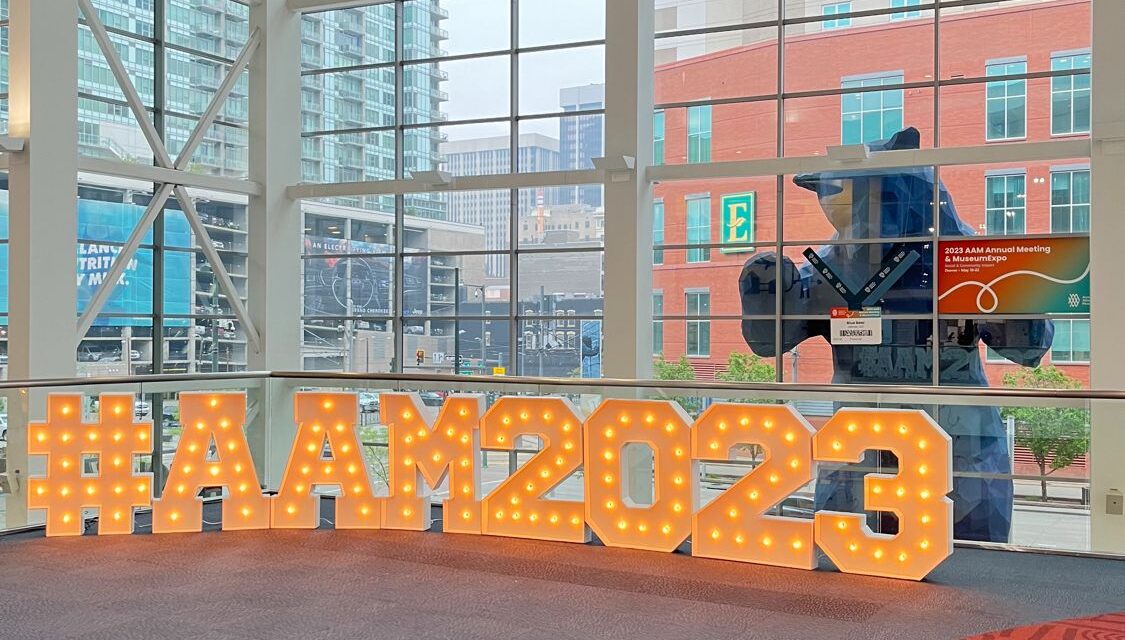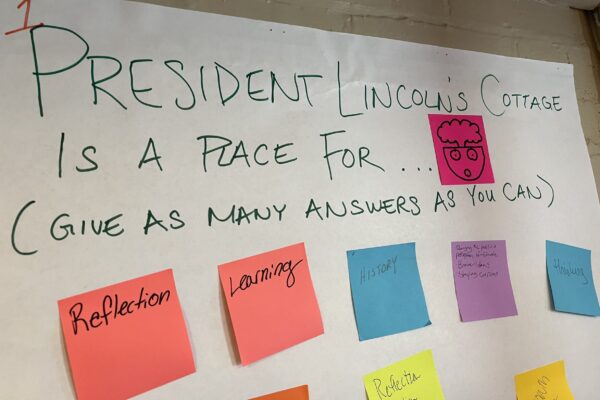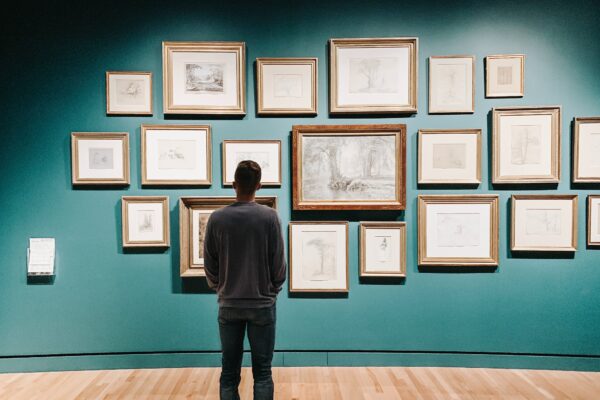- What We Do
- Understanding your audience
- Engaging new audiences
- Designing experiences
- Building loyalty

Top three takeaways from this year’s AAM annual meeting
Our Director for the North America division, Alexa Magladry, attended the American Alliance of Museums annual meeting in Denver this year and shares her breakdown on the key trends out of this year’s conference.
After three jam-packed days of inspiring sessions and workshops, museum-hopping and talking to colleagues from all over the nation, I’m left feeling hopeful, but with a clear picture of the significant amount of work that lies ahead for our sector. Here are the top three learnings that have stayed with me from this year’s conference.
1. Siloed working is standing in our way.
In nearly every session I went to, I heard ‘[insert issue here] is everyone’s responsibility.’
In the PRAM/CARE networking session, Danielle Schulz (Denver Art Museum) and Heather Pressman (Molly Brown House Museum) charged participants with ensuring that accessibility sits across ALL departments, not designated to operations or learning teams. Balboa Park Online Collaborative’s workshop on journey-mapping proposed journey maps as a way to make sure every single staff member at your museum considers the needs of audiences in its planning. In a session focused on how DEAI can drive engaging exhibitions, the team from the Natural History Museum of Los Angeles County advocated for a cross-department approach to creating exhibitions that make a real impact on the local community.
One thing was clear from all of these sessions – ‘staying in our lane’ hinders innovative thinking and gets in the way of providing a truly audience-focused experience. It’s never been more important to bring your colleagues along in strategic planning sessions (not just the leadership team!), brainstorm together and ask other departments for their unique perspective. Having a shared language for audience engagement can be the key to unlocking those silo doors (do silos have doors? you get the point…)
2. We need to start planning for changing visitor needs, now.
In the opening session, former board chair of AAM Chevy Humphrey told us that every 9 seconds a new member of Generation Alpha was being born. By 2045, members of Generation Alpha will have the largest representation than any other generation in the USA, and will be more racially/ethnically diverse than any generation that’s come before. She challenged us to start considering the needs of this generation in exhibition and program planning, now.
Although we know that demographics don’t necessarily inform the needs of our visitors and audiences, we can’t deny that those being born into a world having never known a time before the internet and where all experiences can be personalized will have different needs that need to be met to engage them deeply with our causes. Starting to consider the broad range of visitor motivations and needs – and more importantly, how to meet these – can help prepare us for the emerging generation of museum-goers.
3. The public are looking to museums and institutions to help them understand and engage with the important issues of our time.
From climate change, the growing political divide to systemic racism, the American people trust museums to inform them and encourage them to take action on these big issues. Museums need to consider what role they want to play – will you be an authoritative information source, providing facts in a one-way exchange; an engaging storyteller inspiring creativity and imagination, or a force for empowering your visitors, providing a safe space for uncomfortable conversations and engaging in meaningful debate?
Learning more about these roles and taking inventory of how your museum is currently performing can help ensure you’re prepared to help the public tackle these big issues in a way that drives your mission forward AND meets the needs of your audiences.
We can’t wait to see how our clients and the museum sector work to tackle these issues, and are looking forward to seeing everyone at AAM 2024 in Baltimore.
If you’d like to know how we can help support you in this changing world, please get in touch.
Related content
Learn moreRe-engaging lapsed visitors with SFMOMA
What factors lead to the choice not to renew? How can we increase renewal rates and create targeted messages to re-engage lapsed Members? These are the questions SFMOMA asked us to dig into to help improve their membership renewals. Here's what we found.
Learn moreA home for brave ideas: collaborative and empowered strategic planning at President Lincoln’s Cottage
In 2022, the historic site and museum President Lincoln's Cottage asked us to partner with them to develop a strategic plan. Their aim: not only to set the direction for the next step of their journey, but also to strengthen the team, increase audience focus, maximise impact, and further embed shared values.
Learn moreHow to understand and reactivate lapsed audiences webinar
Join Director Alexa Magladry as she reveals the top tips for engaging with lapsed audiences in this recent webinar.
- Engaging new audiences
- Understanding your audience



